Top 5 AI Optimization Agencies Helping Brands Rank in ChatGPT & AI Search
Simran Kataria

In the world of digital discovery, the way people find businesses has shifted dramatically—and startups are at the heart of this transformation. The era of AI-powered search is here, and it’s changing the rules of the game. Traditional SEO tactics, long dominated by keyword stuffing and backlink building, are giving way to smarter, context-aware algorithms driven by artificial intelligence. For startups that don't have deep pockets or an SEO agency on retainer, this might sound daunting. But the truth is, it's actually a massive opportunity.
Today, many AI startups in India are exploring search strategies in AI, SEO alternatives, and depth-first search-driven systems, but what most founders lack is a clear approach to visibility in an AI-powered discovery environment.
Research from BrightEdge indicates that around 67% of the buyer’s journey now takes place online. And it’s not just Google anymore—more and more consumers are turning to AI tools like ChatGPT, Perplexity, and Gemini for guidance and personalized recommendations.
For instance, Grow & Convert co-founder Benji Hyam recently shared on LinkedIn that 71% of their new leads came through ChatGPT during a single month, underscoring how powerful—and essential—AI search has become.
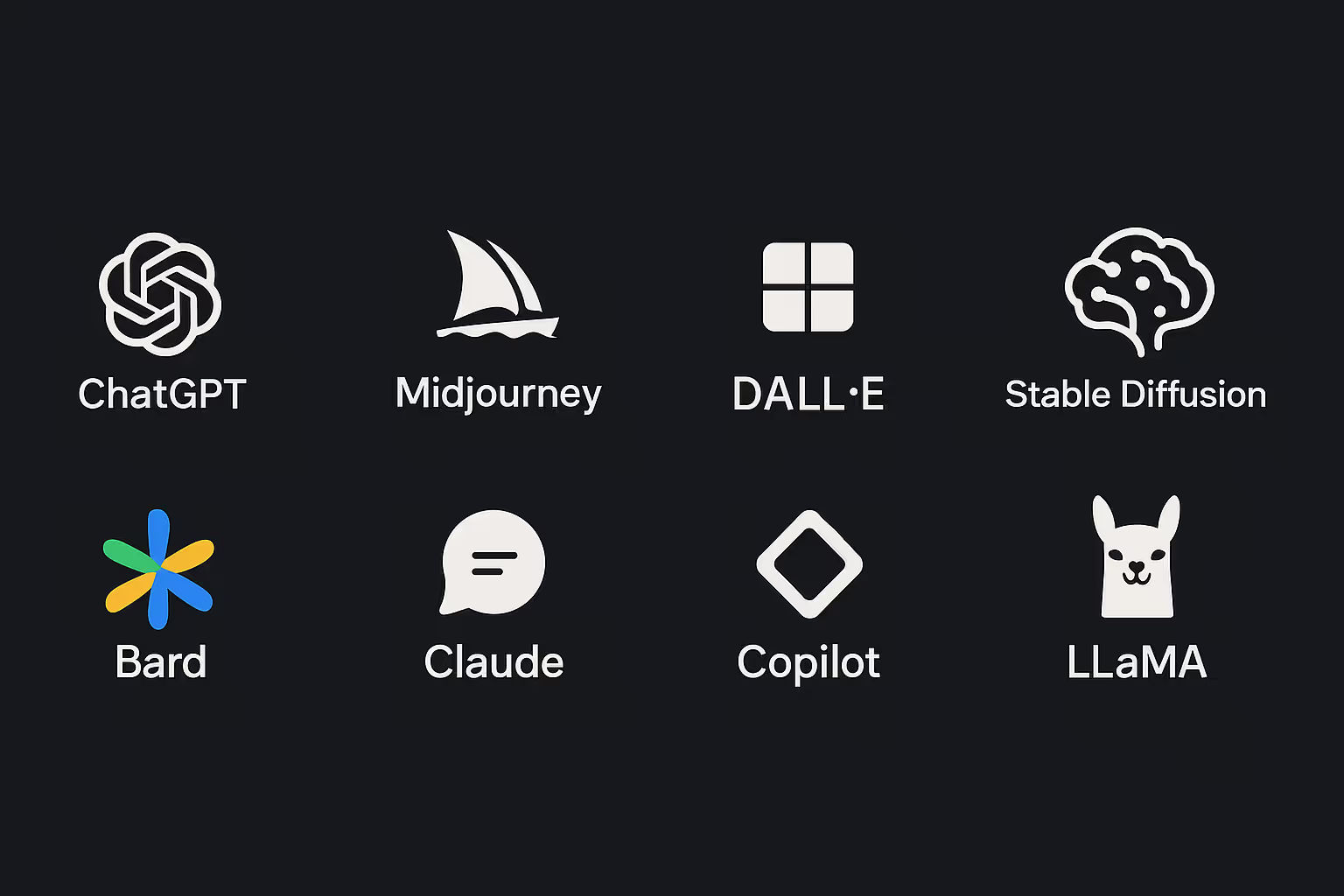
These conversational search engines don’t just scan for keywords. They understand the user's intent, evaluate context, and suggest solutions that are well-articulated, deeply relevant, and often brand-specific.
For startups, this means the playing field has been reset.
You no longer need a six-figure SEO budget to get noticed. What you need is clarity, specificity, and a strategy built for how people actually search in 2025.
In this article, we’ll break down how startups can thrive in the AI-driven search landscape by focusing on high-intent content, smart tools, and lean tactics that work. Whether you're a seed-stage SaaS, a D2C disruptor, or a service-based startup, you’ll walk away with a clear roadmap to win visibility and drive qualified traffic—even without spending a fortune.
Let’s dive into how you can position your startup not just to survive, but to lead in the AI search era.
Search engines have come a long way from the days of simple keyword matching. In 2025, we’ve officially crossed into an era where AI doesn’t just search—it understands. And that understanding is reshaping how content is ranked, recommended, and discovered.
In the early 2000s, SEO was all about finding the right keywords, repeating them often, and collecting backlinks like trophies. But modern AI-powered engines—such as Google’s Multitask Unified Model (MUM), ChatGPT, and Bing’s integration with OpenAI—no longer rely solely on keywords or link profiles. Instead, they focus on the user's intent, the context of their query, and the depth and relevance of the content they surface.
AI search is built to mimic a conversation. When users ask questions, they often follow up with more detail: “What’s the best CRM for a small marketing team under $100/month?” or “Which accounting software integrates with Shopify and supports multi-currency?” Traditional search engines would return a generic list of links. AI, however, offers tailored answers—pulling in specific brand recommendations, features, comparisons, and even direct links.
This shift has introduced two fundamental changes:
First, zero-click searches are now the norm. According to Search Engine Watch, nearly 57% of Google searches now result in zero clicks as AI-driven summaries and instant-answer panels increasingly satisfy users without requiring site visits. In this evolving landscape, AI tools often deliver synthesized responses right on the results page. That means if your brand is part of the AI-generated answer, you’re visible—and if not, you’re invisible to that searcher.
Second, generic content no longer performs. Broad, top-of-funnel pieces like “What is project management?” or “Benefits of remote work” are being commoditized. AI tools don’t need to link to a dozen similar blog posts when they can summarize that information themselves. Instead, what they’re looking for—and recommending—are specific, problem-solving, value-driven pieces of content.
And this is where startups have a distinct advantage.
Large corporations often produce safe, sanitized content meant to appeal to everyone. Startups, on the other hand, can move faster, speak with a sharper voice, and focus on a narrower, more relevant audience. That kind of precision and authenticity is exactly what AI search systems reward.
One emerging trend to note is the rise of entity-based SEO, where search engines focus on recognized brands, people, products, and topics rather than just URLs. The goal for startups is to establish themselves as entities associated with clear, context-rich value propositions. When you do that, AI tools can—and will—recommend you as a solution.
In short, this paradigm shift means search engines aren’t just scanning your site—they’re evaluating your expertise, clarity, and fit. If you’re specific, transparent, and helpful, you can beat the big guys—even without their budget.
For years, SEO playbooks followed the same predictable formula: find high-volume keywords, produce top-of-funnel blog content, build backlinks, and optimize title tags. This approach worked—until it didn’t. Today, thanks to AI search, that formula is losing its effectiveness, especially for startups.
Let’s break down why.
Top-of-Funnel Content Is Losing Visibility
High-volume, educational queries like “What is email marketing?” or “How does SEO work?” were once considered essential. These topics drew traffic and built awareness, even if they didn’t always convert. But in the AI search era, these queries are being answered instantly—without a click.
Ask ChatGPT or Perplexity what email marketing is, and you’ll get a concise, accurate explanation without any need to visit a website. Even Google is crowding out organic results with AI Overviews and featured snippets. This leaves startups investing time and resources into content that doesn’t drive traffic, leads, or conversions.
Backlinks Aren’t the Golden Ticket Anymore
For years, startups obsessed over backlinks. Guest posts, link exchanges, PR pushes—they all aimed to boost domain authority. But AI-driven search tools aren’t ranking content based solely on backlinks anymore. They evaluate depth, relevance, user-centricity, and semantic coherence.
That means even a startup with zero backlinks but a highly detailed, useful piece of content can outrank a large, well-linked competitor—especially in conversational search.
Generic Doesn’t Cut It Anymore
In the past, publishing “10 Social Media Tips for Small Businesses” was a reasonable strategy. But now, AI engines scan the web and discard anything that lacks originality or specificity. If your content sounds like everyone else’s, it simply won’t get recommended.
AI doesn’t need to show ten identical lists of marketing tips. It wants to present the best answer—often one that includes unique insight, use-case specificity, or original data.
The Real Problem: SEO for Vanity Metrics
Traditional SEO has also led many startups to focus on the wrong goals: pageviews, keyword rankings, or bounce rates. While those are important, they don’t equate to business results. In contrast, AI-driven search rewards the kind of content that actually moves someone to take action—whether it’s signing up for a product, booking a demo, or requesting more information.
In a world where bots summarize and interpret your content before a user even sees it, your job isn’t to rank—it’s to communicate value with crystal clarity.
And this leads us to the shift startups must make: from generic, volume-driven strategies to highly specific, context-aware content that solves real problems.
If traditional SEO was about finding the right keywords, AI search is about understanding the person behind the search. The winners in this new era are not those who rank for the most terms, but those who solve specific problems for well-defined users—and communicate that clearly.
In the AI search landscape, the most valuable content is what marketers call bottom-of-the-funnel (BOFU) content. This is content that addresses purchase-ready questions like:
These aren’t vague educational searches. They’re filled with urgency and intent—and AI search engines know it. That’s why they prioritize brand recommendations, product comparisons, and customer case studies over generic blog posts.
As a startup, this is your opportunity to shine. You don’t need to rank for “email marketing” to get noticed. You need to show up when someone asks, “Which tool helps startups automate email onboarding without coding?”
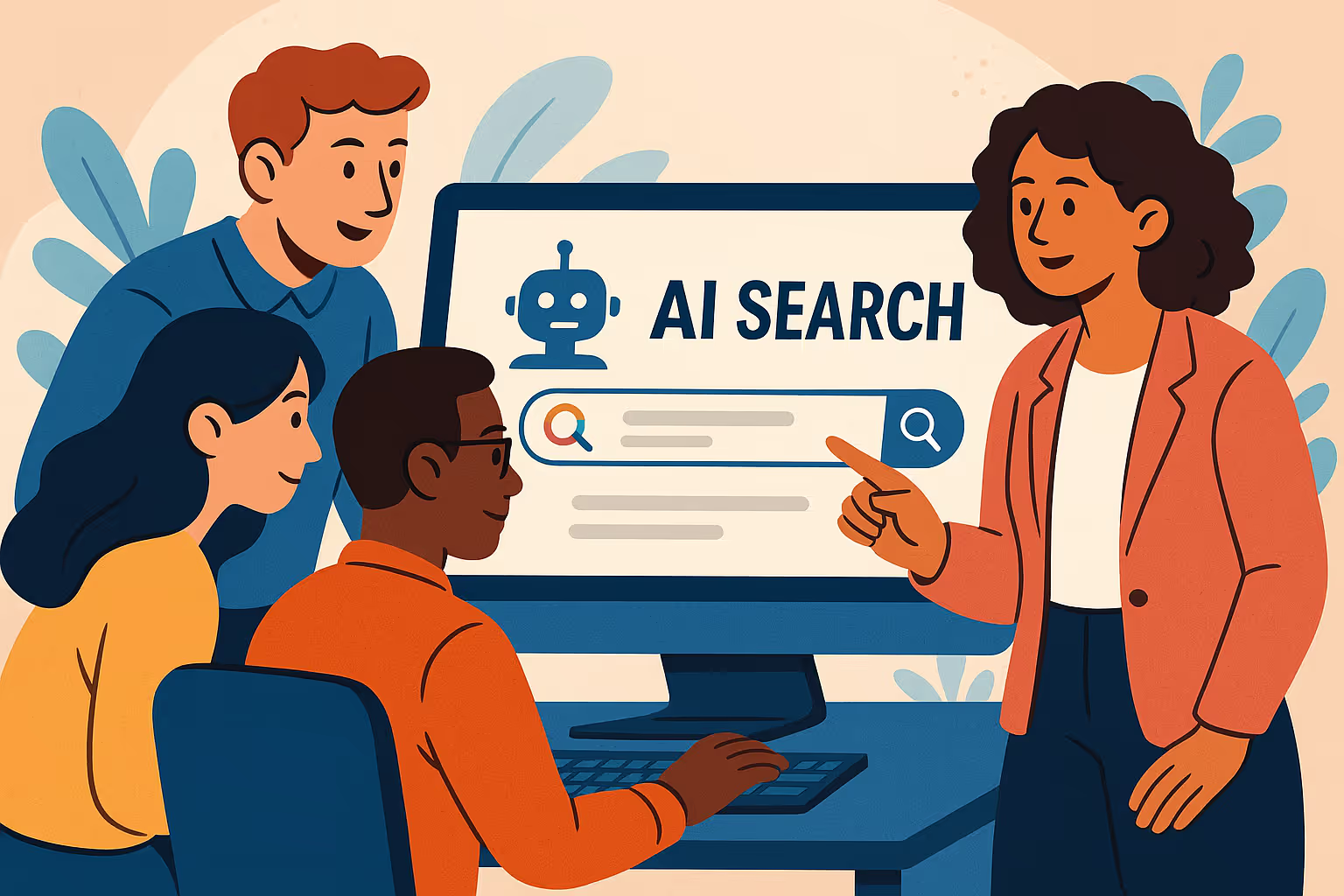
When users talk to AI search engines, they’re having conversations. They’re adding context—“I’m a solopreneur,” “I have a $500/month budget,” “I’ve already tried Mailchimp.” AI models like ChatGPT use this conversation history to fine-tune their answers and tailor brand recommendations.
Your job is to create content that addresses these layered, contextual needs. That means writing with empathy and specificity. It’s not enough to say, “We’re a great tool for small businesses.” You need to say, “We help solo founders convert cold leads into paying customers using personalized drip campaigns that take 10 minutes to set up.”
AI search engines don’t guess. They pull from your content to decide whether your brand fits the context of a user’s query. That means your blog posts, landing pages, and feature descriptions must explicitly state:
Take a look at Grow & Convert’s content. They’re often recommended by ChatGPT because their site is filled with clear messaging like: “We specialize in bottom-of-funnel content that drives demos and qualified leads for B2B and SaaS companies.” No fluff. No ambiguity. Just value and clarity.
Startups that clearly articulate these differentiators get surfaced more often in AI-generated answers—not because they’ve hacked the algorithm, but because they’ve made it easy for AI to understand what they do and who they help.
Ultimately, your content’s ability to match searcher context is more important than keyword match. That’s the key difference in AI search.
So rather than chasing keyword volume or writing broadly, startups should focus on becoming the best possible answer to specific, high-intent queries. It’s not about more content—it’s about the right content.
It’s easy to see AI as something that’s making SEO harder. After all, it’s reducing organic clicks, rewriting how people discover content, and forcing a total rethink of traditional strategies. But here’s the truth that most startups miss: AI is not your competition—it’s your greatest asset.
For lean teams with limited budgets, AI can provide the scale, speed, and precision that was once only accessible to companies with full marketing departments. Used strategically, AI can turn a two-person team into a high-output content engine.
Startups can now create high-quality content in a fraction of the time it once took. Tools like Jasper and Rytr can generate drafts based on specific prompts, helping founders and marketers overcome the blank page problem. Grammarly ensures polish and clarity. Platforms like Frase and SurferSEO guide you on how to structure your content so it meets SEO expectations—even in an AI-driven world.
But the trick isn’t to let AI do everything. The real power comes from combining AI’s efficiency with human judgment and authenticity. That’s what resonates in AI search and with readers.
In a large-scale field experiment, human–AI teams were shown to increase productivity by 60% per worker compared to human-only teams. Participants working with AI collaborators spent 23% less time on editing tasks and were able to focus 23% more on content creation—demonstrating that AI-assisted workflows significantly boost output while preserving quality.
Once content is created, AI helps you get it in front of the right people. Distribution tools like Smartly.io can optimize ad placements across platforms, while tools like Narrato can automatically repurpose a blog post into LinkedIn threads, Instagram captions, or email newsletters.
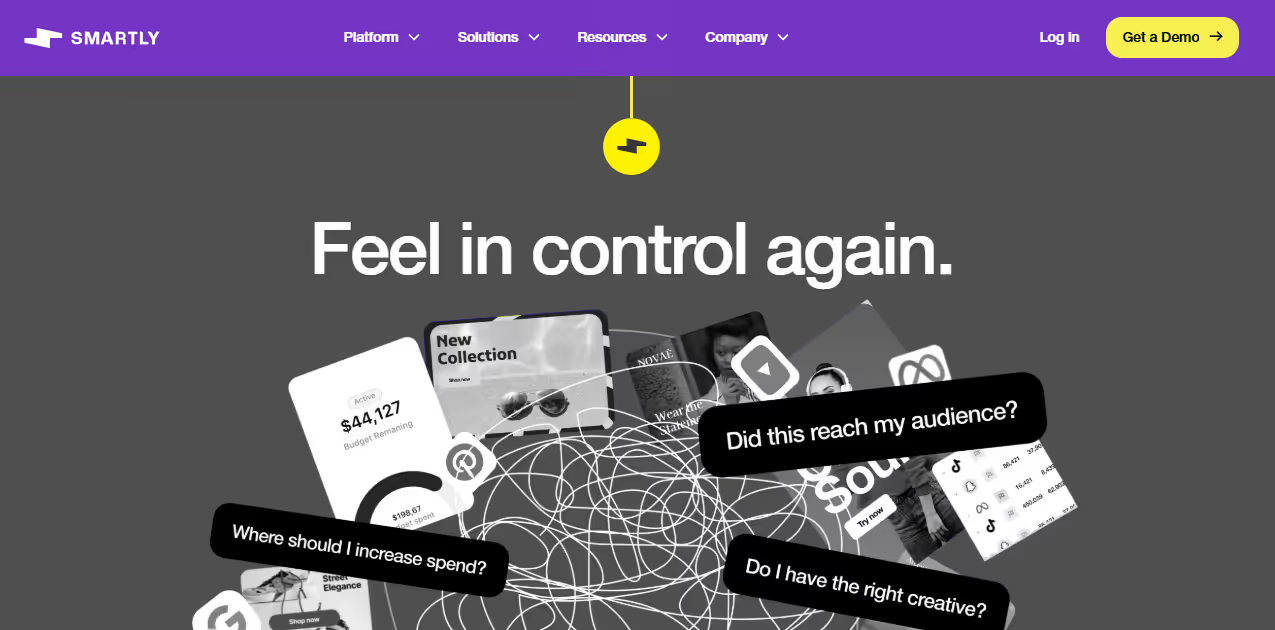
Even without paid ads, startups can use AI insights to identify the best times to publish and the most relevant hashtags or channels for specific audiences. This ensures your message lands where it matters.
AI also unlocks personalization that would otherwise be impossible without a massive CRM team. Tools like Drift or Intercom can analyze user behavior and deliver content that feels hand-picked, whether through chatbots, automated emails, or website copy variations.
These aren’t gimmicks—they’re measurable performance drivers. Companies using AI personalization report 5–8x higher ROI on marketing investments (McKinsey).
The most compelling part? AI doesn’t care about your ad spend. It responds to relevance, context, clarity, and intent. That means a startup with smart positioning and lean AI-driven execution can compete head-to-head with enterprise players in search results.
You don’t need a 10-person content team or a six-figure SEO agency. You need the right tools, the right process, and a strategy tailored to the way people search today.
For startups navigating the AI search era, the question isn't "How do we rank?"—it's "How do we get recommended?" The shift from traditional search to AI-powered discovery requires a leaner, more focused approach to content and SEO. The good news? You don't need a big team or a big budget. What you need is precision, clarity, and consistency.
Before you write a single piece of content, get clear on your value proposition. AI search engines are looking for brands that are tightly aligned with user needs. Your homepage, product pages, and blog content must make it obvious:
Start by documenting your top use cases. Instead of saying “we’re an all-in-one solution,” explain the specific scenarios your customers face—and how your product solves them.
For example, if you're a productivity tool for remote design teams, say so. Outline how you help with feedback loops, version control, and creative approvals. These are the details AI engines look for when matching brands to user queries.
In AI search, being helpful wins. And helpfulness is highest when your content addresses bottom-of-funnel (BOFU) questions—those tied to immediate decisions.
Startups should prioritize:
These content types directly align with how people ask questions in AI tools—and they’re more likely to surface your brand as a recommended solution.
You don’t need to be a technical SEO expert to build a search-friendly site. Focus on the basics:
Free tools like Screaming Frog or Google’s PageSpeed Insights can help you stay on track. For startups, it’s about making sure your content is accessible and easily understood by both users and AI.
Startups can amplify their efforts using AI-based content and SEO tools. Here’s a lean stack to consider:
These tools can dramatically reduce content production time while ensuring quality and consistency across channels.
In the AI search era, it’s not enough to rank—you need to convert. Measure what matters:
Tracking tools like Traqer.ai help startups monitor their AI search presence and understand where they’re being recommended. You can then double down on what's working and refine what’s not.
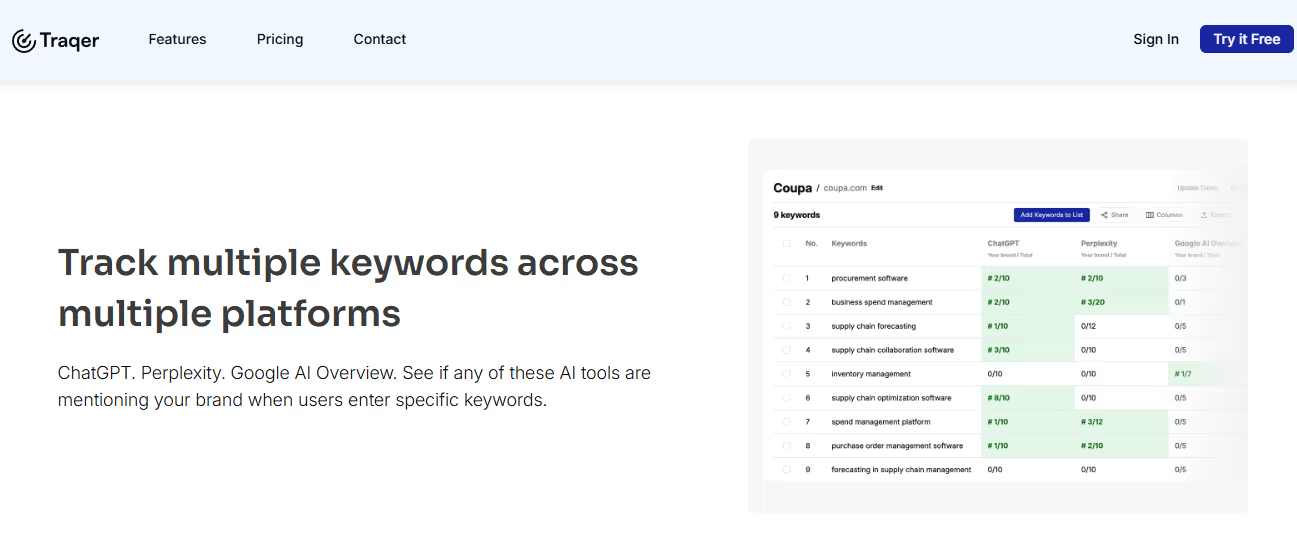
One of the most overlooked aspects of SEO in the AI era is how clearly you articulate your value proposition. In traditional search, users would click through to your site and browse around to learn more. Today, AI models like ChatGPT or Google’s AI Overview might summarize what your company does before a user ever visits your website.
That means your brand’s first impression is no longer made by your homepage—it’s made by your messaging and how well it aligns with user intent.
While clever slogans might sound good in a pitch deck, AI tools don’t infer meaning—they extract it. You need to be direct. For instance:
The second example tells AI exactly who you serve and what you help them achieve. When a user asks, “What tools help SaaS startups reduce churn?” AI is far more likely to include your brand in its response.
AI models thrive on content that solves problems. Every product page, landing page, and blog post should answer three simple questions:
This structure is not just helpful for readers—it gives AI tools the semantic signals they need to connect your brand with specific user needs.
For example, consider this copy from Grow & Convert’s homepage:
“We specialize in bottom-of-funnel content that drives demos and qualified leads for B2B SaaS companies.”
This sentence has been directly quoted and paraphrased by ChatGPT in user recommendations. Why? Because it’s specific, useful, and grounded in real value—not marketing fluff.
AI doesn’t need to list every feature you offer. It needs to understand what makes you different. Are you faster, cheaper, easier to integrate, or more specialized? Say it—clearly and consistently.
Use real-world context to drive this home:
The more detailed and specific you are, the more useful you become to AI models looking to recommend a solution.
Make sure your messaging is not buried in your blog or tucked away in an FAQ. It should appear:
If your site speaks in a fragmented or inconsistent voice, AI tools won’t be able to understand—or recommend—you effectively.
Remember: AI models aren’t parsing intent—they’re responding to it. Your job is to give them the material they need to confidently say, “This startup is the right fit.”
It’s a common misconception that effective SEO requires hefty spend on tools, agencies, or content teams. In reality, many startups achieve significant traction by being strategic, scrappy, and laser-focused on what matters. When you align your content with user intent and distribute it wisely, you can win without burning through your budget.
The ecosystem of free and low-cost SEO tools has exploded, making it easier than ever for startups to compete.
By combining two or three of these tools, you can build a powerful, cost-efficient SEO tech stack tailored to your immediate goals.
Instead of relying solely on Google, distribute your content where your audience already hangs out:
This approach not only boosts visibility but also creates valuable social signals that AI search engines factor into their algorithms. Active community participation often correlates with brand mentions—an increasingly important factor in conversational search.
Instead of building a content calendar filled with generic posts, go narrow and deep. Focus on:
These formats serve the bottom of the funnel and mirror how people ask questions in ChatGPT or Perplexity. You don’t need dozens of posts. You need a few that speak directly to real, high-intent search queries.
Instead of obsessing over Google rankings, focus on content that:
By tracking outcomes—not just traffic—you build a smarter feedback loop that continuously improves your content strategy.
Forget chasing random backlinks. Startups can gain more value by focusing on:
Each mention reinforces your topical authority—and provides material AI engines can reference when recommending tools to users.
AI isn’t just changing how people search—it’s also transforming how startups create, distribute, and optimize content. The right tools, used thoughtfully, can dramatically accelerate your SEO efforts without overwhelming your budget or team. For resource-strapped startups, this represents a clear strategic advantage.
Startups no longer need to spend weeks drafting each blog post or rely on expensive agencies to produce content. AI can handle the heavy lifting, allowing your team to focus on creativity and authenticity.
Start by using these tools to generate rough drafts or outlines. Then, edit to add nuance, personality, and brand tone. Remember: AI helps with scale—but human oversight ensures authenticity and trust.
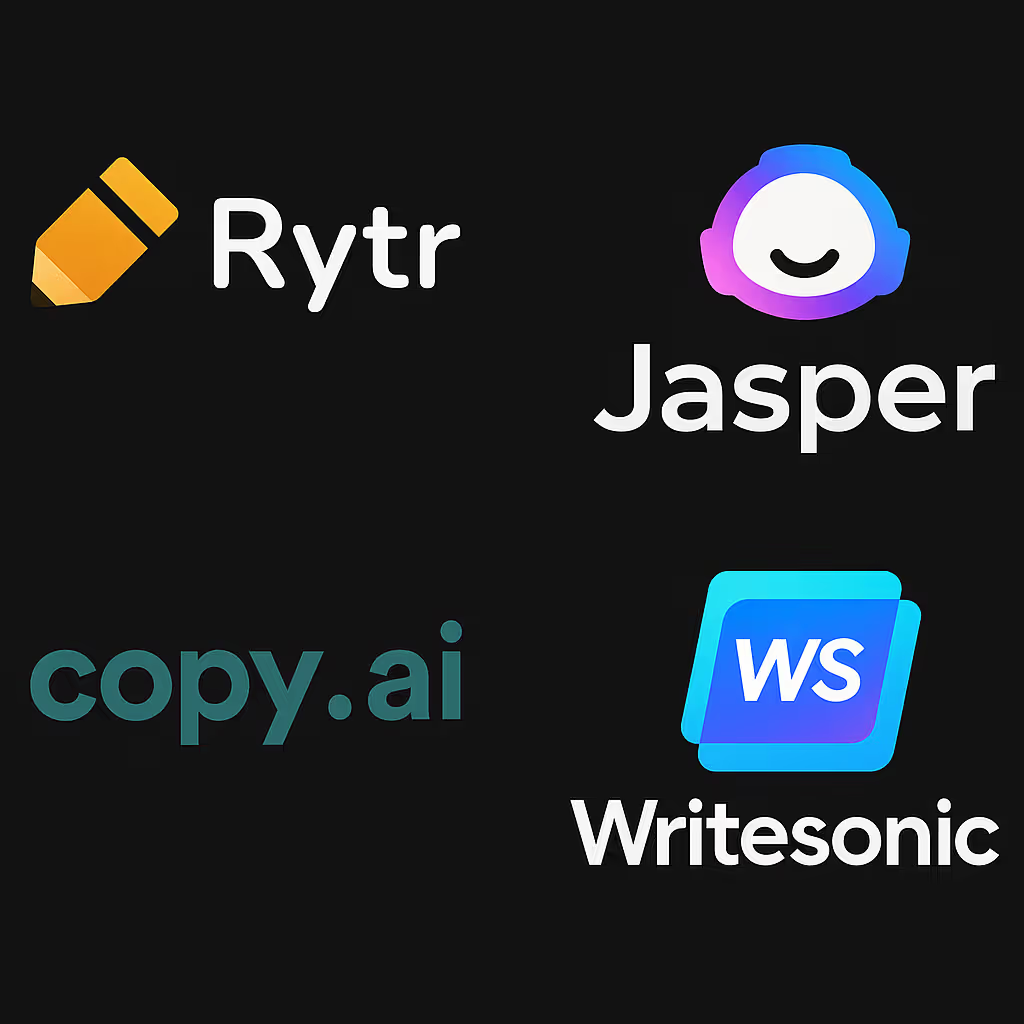
Producing content is just the start. AI can also help ensure it’s optimized for performance.
Many of these tools come with free trials or affordable solo plans—perfect for early-stage teams.
Creating good content is only half the battle. You need to ensure it reaches the right audience at the right time.
Distribution is where many startups falter—don’t let great content die in silence. Use AI to amplify its reach.
AI also helps you measure what’s working—so you can improve faster.
These insights allow you to prioritize high-performing content, identify new topic opportunities, and tweak your strategy based on what the data is telling you.
The big takeaway? You don’t need to hire more people to scale your SEO. With the right AI stack—and a lean mindset—you can produce smarter content, distribute it effectively, and track its impact in real-time.
Not all content is created equal—especially in the AI-powered search landscape. While traditional SEO rewarded broad, educational pieces, AI search engines prioritize content that is specific, actionable, and aligned with user intent. Startups that understand this can tailor their content strategies to maximize visibility and conversion.
AI tools love tangible proof. A well-crafted case study provides context, outlines a specific problem, and demonstrates a measurable solution. It shows who your product helps and how it delivers results.
Include clear outcomes, client industries, and challenges solved to make these case studies more discoverable in AI summaries.
Users are increasingly looking for alternatives to well-known tools or services—especially when using AI assistants. These searches are typically bottom-of-funnel and tied to high intent.
Like alternatives pages, these work well for users actively deciding between options.
Use structured tables, use-case scenarios, and honest pros/cons for maximum clarity.
Skip the “what is…” and jump into “how to solve…” territory. These are gold for AI search engines because they align with specific user problems.
This strategy, popularized by Grow & Convert, focuses on “jobs to be done” (JTBD) and bottom-funnel intent.
These queries are ripe for AI to suggest real solutions—so your content must directly map to the task the user wants to accomplish.
AI tools increasingly pull from sites that demonstrate authority and credibility.
Don’t be afraid to show behind-the-scenes decisions or controversial takes—AI favors unique perspectives over sanitized summaries.
While AI can streamline content creation, it can’t replicate the human elements that build trust, credibility, and connection—especially in a startup’s early days. That’s why the most effective strategy isn’t replacing people with machines; it’s combining the strengths of both.

AI-generated content is becoming ubiquitous, and audiences are growing increasingly skeptical. According to Edelman’s 2025 Trust Barometer, 80% of people say they trust brands they personally use, even as overall trust in institutions erodes—highlighting how critical authenticity and human involvement in content creation have become.
This is especially critical in AI-driven search environments, where content is often summarized or rephrased by language models. If your material sounds too generic, lacks a distinct voice, or doesn’t reflect real-world experience, it won’t stand out—and it likely won’t get surfaced.
AI excels at scaling repetitive or research-heavy tasks. Use it to:
These tasks save time and help your team stay focused on strategy, storytelling, and refinement.
The emotional core of your content—the tone, nuance, storytelling, and trust-building—should come from real people. Founders, marketers, and product experts can layer in:
This blend of AI structure and human voice is what makes content memorable and share-worthy.
For startups, consistency is key. To ensure AI is used effectively without compromising brand voice, create a lightweight framework:
Avoid the trap of turning your blog into an AI-generated echo chamber. The more your content sounds like everyone else’s, the less likely it is to be quoted or recommended by AI tools. Instead, use AI to speed up your process and free your team to double down on what matters—original thinking, customer empathy, and real expertise.
In the AI search era, how you organize and structure your content is just as important as what it says. AI-powered search engines don't just look for keywords—they analyze meaning, relationships between topics, and how clearly your content answers a user's query. That’s where structured content and semantic SEO come into play.
Semantic SEO is the practice of optimizing content around intent, meaning, and topic relationships—not just keywords. Instead of focusing on “exact match” phrases, semantic SEO helps your content get discovered by addressing the broader concept a user is exploring.
For example, a post about “tools to manage remote design feedback” might also include related terms like “collaboration,” “asynchronous reviews,” “design workflows,” and “version control.” This web of related topics helps AI systems understand the depth and relevance of your content—making it more likely to be recommended.
Structured content is easier for AI engines to parse and present in summaries. This means using:
For example, implementing FAQ schema can help your answers appear directly in AI-generated responses or featured snippets, increasing your visibility—even if users never click through to your site.
Instead of publishing isolated blog posts, organize your content into clusters around central themes. For example:
These interlinked pieces tell AI systems (and Google) that your site is a credible source on this topic. More importantly, they make it easier for users—and AI engines—to find the most relevant part of your content.
AI tools like ChatGPT don’t think in keywords. They recognize entities—people, brands, tools, problems, and concepts. So instead of focusing only on keyword density, use consistent references:
For instance, if your tool integrates with Stripe, Slack, and Webflow—say it. These associations strengthen your brand’s connection to high-value queries.
AI still uses engagement signals—like bounce rates, time on page, and click-through rates—to gauge the usefulness of your content. That means:
Optimizing these elements ensures your content not only gets recommended—but also converts.
In a world where clicks are optional and answers are generated directly in the search box, traditional SEO metrics no longer tell the full story. For startups, measuring success now means looking beyond Google rankings and focusing on visibility, engagement, and influence in AI-powered environments.
AI search tools like ChatGPT and Perplexity don’t display a list of blue links. Instead, they synthesize answers from multiple sources—highlighting brands, tools, and solutions that align best with the user’s query.
So, how do you know if your brand is showing up?
This kind of AI visibility tracking is now as critical as checking keyword rankings in Search Console.
It’s tempting to still chase vanity metrics like pageviews or impressions. But AI-driven content strategies demand more outcome-based metrics, such as:
Use Google Analytics 4 or HubSpot to trace the journey from content to conversion, rather than just monitoring click counts.
Google and AI engines alike use engagement metrics to judge content quality:
Startups should optimize based on how users interact with content. This means improving readability, adding strong internal links, and including calls-to-action that invite further exploration.
As AI tools begin recommending you more often, branded search volume may increase—an indirect signal that you’re winning trust.
These are signs that your content—and your brand—is becoming part of the conversation, both online and in AI-generated responses.
AI search evolves fast. Monitor performance regularly and adapt quickly:
Startups that treat SEO as an ongoing learning process—rather than a one-time checklist—will adapt best to the AI-powered landscape.
Many startups serve specific geographic areas or cater to narrow niches, making local and niche SEO critical. In an AI-dominated world where discovery is conversational and context-aware, focusing on localized and specialized content can be a powerful differentiator—and a budget-friendly one.
Local SEO isn’t just for brick-and-mortar businesses anymore. Even service-based and remote startups can benefit from being contextually tied to a location or region. When users ask, “What are the best design studios near Austin?” or “Who builds SaaS onboarding flows in Denver?”—AI engines rely on structured local data to make recommendations.
To optimize for local AI search:
For niche startups, going deep is more effective than going broad. Instead of trying to rank for general queries like “best marketing tools,” aim for:
This specificity aligns with how users talk to AI tools. When someone types or says a highly contextual query, the AI engine is looking for content that directly answers that niche scenario.
Startups that create content targeting unique personas or use cases are far more likely to be surfaced in these results—especially if the content reflects clarity, authority, and authenticity.
Another effective strategy is to build partnerships with businesses, newsletters, and communities in your region or niche. This can include:
These mentions often lead to brand exposure that gets indexed by AI search systems and reinforces your credibility within that niche.
Local and niche searches often happen via voice. Users say things like:
Ensure your content mirrors this phrasing with Q&A sections, clear subheadings, and conversational titles. Add schema markup (like LocalBusiness, Service, or FAQ) to help AI search engines understand context and serve your pages in voice results or AI summaries.
Sometimes, the simplest tactics are the most effective. Startups can gain visibility in:
These listings don’t just drive traffic—they provide contextual signals that AI tools use when scanning for reputable, relevant, and location-tied brands.
Navigating the evolving world of AI-driven search offers startups a unique advantage—but only if they avoid common missteps that can undermine visibility and trust. Let’s explore the most critical mistakes startups should steer clear of when building their SEO and content strategies for an AI-dominated future.
In traditional SEO, broad topics like “What is CRM?” or “How does email marketing work?” were used to drive traffic. But in the AI search era, top-of-funnel content is commoditized. These queries are answered instantly by ChatGPT or Google AI with no need to reference your site.
Startups often waste resources creating content that simply doesn’t convert. Instead, focus on bottom-of-funnel topics that reflect buyer intent and lead to real business outcomes.
Yes, backlinks still matter—but not the way they used to. AI-powered search engines prioritize depth, clarity, and contextual alignment over sheer link volume. Buying backlinks or engaging in shallow link exchanges can lead to penalties—and won’t help your content show up in LLM responses.
Instead, earn links organically through unique insights, partnerships, and community contributions. Focus on content that’s worthy of citation because it solves specific, high-value problems.
AI tools are trained to surface the most specific, differentiated, and helpful answers. If your content could be written by any brand in your category, it will get overlooked. Startups often make the mistake of copying competitors’ formats or regurgitating popular topics.
To stand out, include real examples, personal stories, case studies, and unique opinions that only your team can provide.
Many startups overlook technical SEO entirely. But in the AI era, structured content isn’t optional—it’s a key way to communicate with search engines. Failing to use FAQ schema, Article schema, or Product schema makes it harder for AI tools to understand your content and recommend it effectively.
Invest a few hours setting up structured data across your blog and site pages. Tools like RankMath and Schema.org plugins make this easier, even for non-technical teams.
AI can help you move fast, but it shouldn’t replace your editorial standards. Auto-publishing blog posts or social copy without editing leads to flat, robotic content—and worse, potential inaccuracies.
Search engines and users can spot lazy content. Maintain a human review layer that checks for tone, originality, and factual accuracy.
While most startups monitor Google rankings, few are tracking their mentions in ChatGPT, Perplexity, or other AI tools. That’s a missed opportunity. As more users shift to these tools for product research, startups must understand how often they’re being recommended—and where they’re being overlooked.
Tools like Traqer.ai are emerging to fill this gap. Make monitoring your AI search footprint a core part of your growth strategy.
One of the biggest challenges for startups in the AI era isn’t creating content—it’s maintaining consistency and authenticity while scaling fast. AI tools can help generate more content, but if your brand voice becomes diluted in the process, you risk losing the trust and engagement of your audience.
AI-powered search engines don’t just reward well-structured content—they reward clarity, originality, and trustworthiness. Your brand voice is what gives your content its personality, credibility, and recognizability.
A consistent tone makes your messaging more relatable and memorable, especially when AI tools summarize or reference your material. If your content sounds just like everyone else’s, you won’t stand out—and you won’t get recommended.
Before you scale, define your brand’s communication style. Create a voice and tone guide that outlines:
Use this guide across all content types, from landing pages to support docs to blog posts. This ensures that no matter who’s writing—or which tool is helping—the message stays on-brand.
Startups that scale well do so by blending AI and editorial workflows:
This hybrid model preserves authenticity while dramatically reducing production time.
Don’t try to cover everything at once. Instead, identify one or two key personas or use cases and create content clusters around them. As those start to perform, scale into adjacent topics and verticals.
For example, if your tool helps remote design teams streamline approvals, start with:
Once these rank or get AI mentions, expand into related topics like version control, creative workflows, or onboarding new designers.
Your brand voice doesn’t have to come from your marketing team alone. Product managers, customer success leads, and even users can contribute. Use interviews, quotes, and user-generated content to build credibility and show real-world value.
Repurpose Slack conversations, email threads, or feedback sessions into valuable content. Not only is this resource-efficient—it also reflects your brand’s real tone of voice.
As content volume increases, implement basic editorial checkpoints:
If you're using AI tools like Jasper or Frase at scale, pair them with consistent templates and high-quality prompts aligned with your brand values.
The AI search era may feel like uncharted territory, but many startups are already proving that you don’t need a massive SEO budget to succeed. Through focused strategies, sharp messaging, and smart use of AI, these companies have carved out meaningful visibility—and conversions—in a crowded digital space.
San Francisco-based content agency Grow & Convert shifted early to a pain-point SEO strategy, prioritizing bottom-of-funnel content over top-of-funnel volume. Instead of chasing terms like “content marketing basics,” they created case studies and keyword pages like:
Their customer-focused content strategy has clearly resonated in the AI search landscape. According to Grow & Convert, “we’re already seeing 70–80% coverage in ChatGPT and Perplexity for keywords where our clients rank in Google’s top 10 or top 3 spots”. That means a significant portion of their leads now come directly from conversational AI tools, rather than through traditional search channels.
Key Takeaway: Clear differentiation and problem-focused messaging wins in AI search.
Jasper, a content AI platform, used its own tools to generate and optimize content at scale—but didn’t stop there. Their team implemented a structured editorial process where human writers reviewed and refined each AI-generated piece to align with Jasper’s tone and audience needs.
They also used topic clusters like “AI in marketing,” “AI content strategy,” and “writing with AI” to boost semantic relevance across hundreds of blog posts, landing pages, and help docs. This not only improved traditional SEO performance but also positioned them well in AI search responses.
Key Takeaway: AI-generated content must still be human-shaped to maintain authority and trust.
Chat platform Drift focused on high-intent use cases like “how to qualify leads with chatbots” and “real-time support for B2B sales teams.” What made them stand out was how they personalized conversations using AI-powered automation.
In one example, MongoDB used Drift to analyze visitor behavior and qualify leads through targeted chatbot interactions. By matching users with relevant questions based on session data, they achieved a 70% increase in net new qualified leads within three months (verge-ai.com).
Drift’s product documentation, use case pages, and solution-driven content are often mentioned in AI-generated responses when users search for “best B2B chatbot tools”—thanks to their clear positioning and contextual relevance.
Key Takeaway: Personalization combined with bottom-funnel content wins both clicks and conversions in the AI search landscape.
Poland-based SEO tool Localo helps small businesses improve local search rankings. Despite limited resources, they created highly targeted content like:
By focusing on geographic specificity and hyper-relevant queries, they gained traction in both Google and conversational AI tools like Perplexity.
Key Takeaway: Local and niche relevance is a major opportunity for small players in AI-driven search.
These case studies prove that when startups align their content with user intent, focus on depth over volume, and leverage the right tools, they can outperform much larger competitors—even in an AI-saturated search landscape.
1. What is the main goal of generative AI for businesses?
The core goal of generative AI is to help businesses automate work, create content faster, and improve decision-making using context and data. For startups, generative AI becomes a way to scale marketing, research, and workflows without needing a large team.
2. How do you optimize content for AI search?
To optimize for AI search, focus on clarity, structure, internal linking, and BOFU content that solves real problems. Instead of keywords alone, prioritize intent, topic depth, and entity-based content so AI tools can understand ai in business, your positioning, and relevance.
3. Is GEO replacing SEO?
GEO (Generative Engine Optimization) isn’t replacing SEO — it’s expanding it. Traditional SEO helps with Google rankings, while GEO ensures your brand appears in tools like ChatGPT, Perplexity, Bard, and AI Overviews. Startups need a blended approach that includes schemas, clarity, and search strategies in AI.
4. How do I measure GEO performance?
You can measure GEO performance through AI search monitoring tools, branded search lift, BOFU conversions, and how often your product or service appears in AI-generated answers. Metrics go beyond rankings and include visibility, mentions, and relevance across ai tools for business and discovery platforms.
5. Can AI startups in India compete with established brands without a big SEO budget?
Yes — especially now. AI search rewards clarity, niche focus, and structured content, not size or spend. With the right content strategy, internal linking, and positioning, AI startups in India can outrank bigger competitors in both traditional search and AI-powered search engines.
The AI search revolution isn’t coming—it’s already here. Traditional SEO tactics like broad content farming, backlink hoarding, and top-of-funnel keyword chasing are quickly losing ground. In their place, context-rich, intent-aligned, and human-authored content is rising to the top.
For startups, this shift is a gift. It resets the playing field, prioritizing precision over volume and clarity over domain size. With the right strategy, tools, and voice, small teams can create big visibility in AI-powered search engines.
Don’t wait for the market to shift back—it won’t. Instead, lean into what makes your startup different, speak clearly to your niche, and let content rooted in real problems and real value do the heavy lifting.
If you’re ready to future-proof your content strategy and win in this new era of discovery, Ballistic Design Studio is here to help. We build brand-first SEO and content systems designed specifically for the AI age—so your startup doesn’t just keep up, it leads.

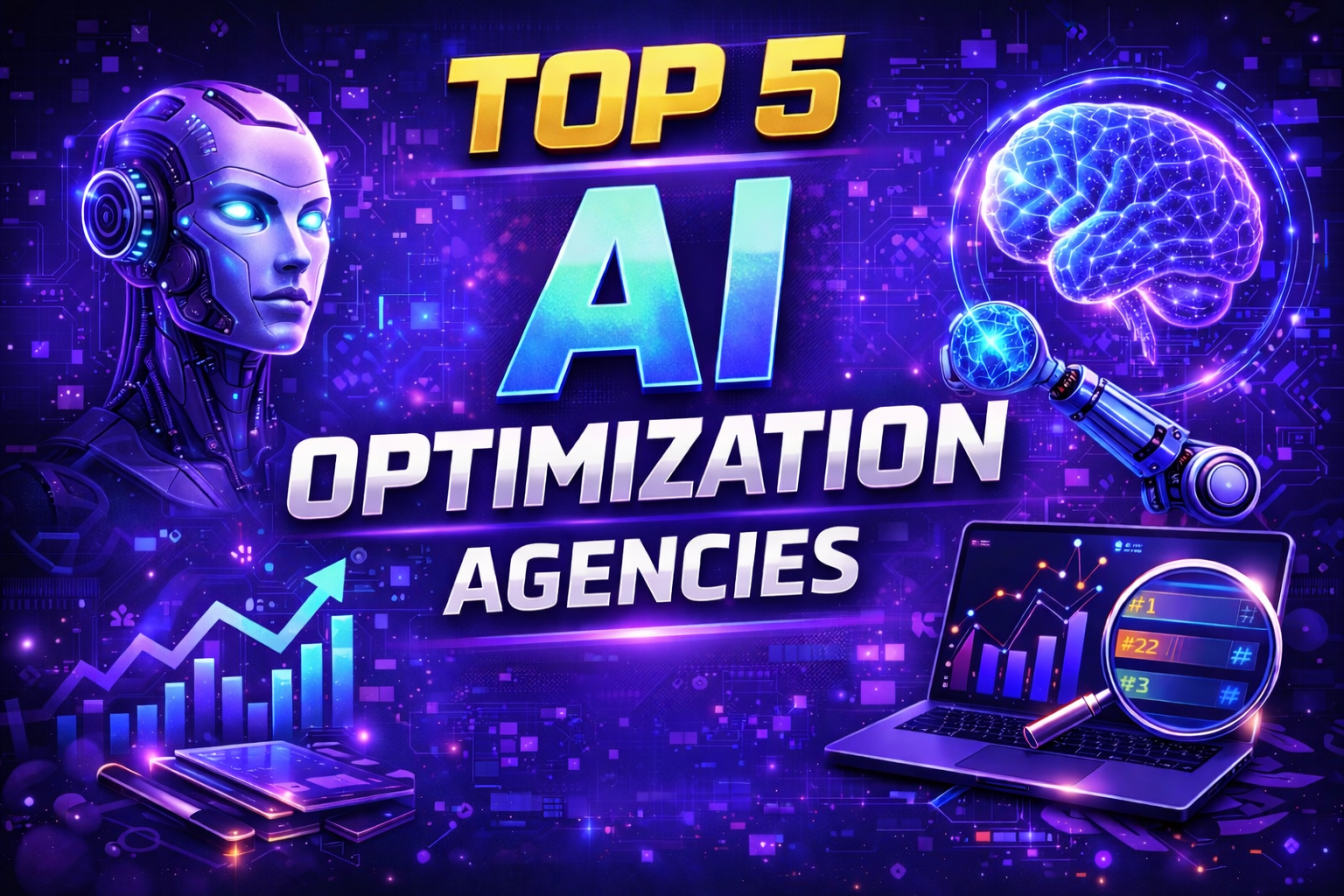

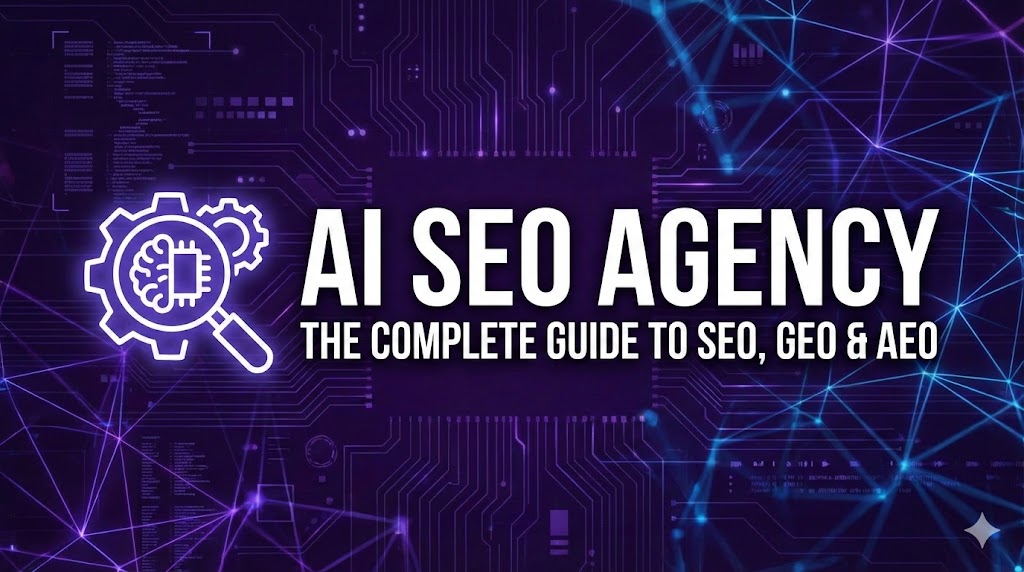
Wait, don't go! 100% Free - Unlimited Webflow Development for 7 days.
Only valid for-